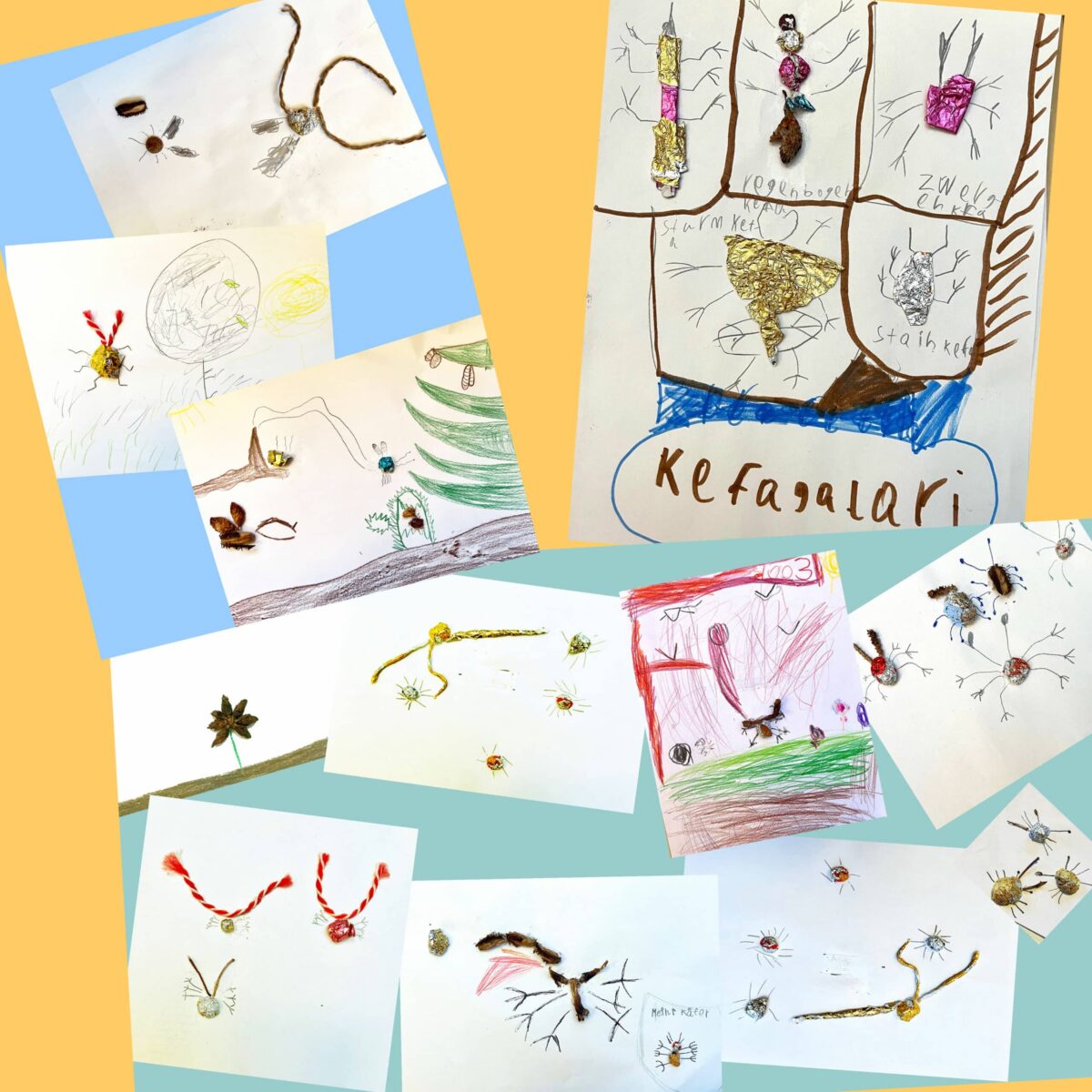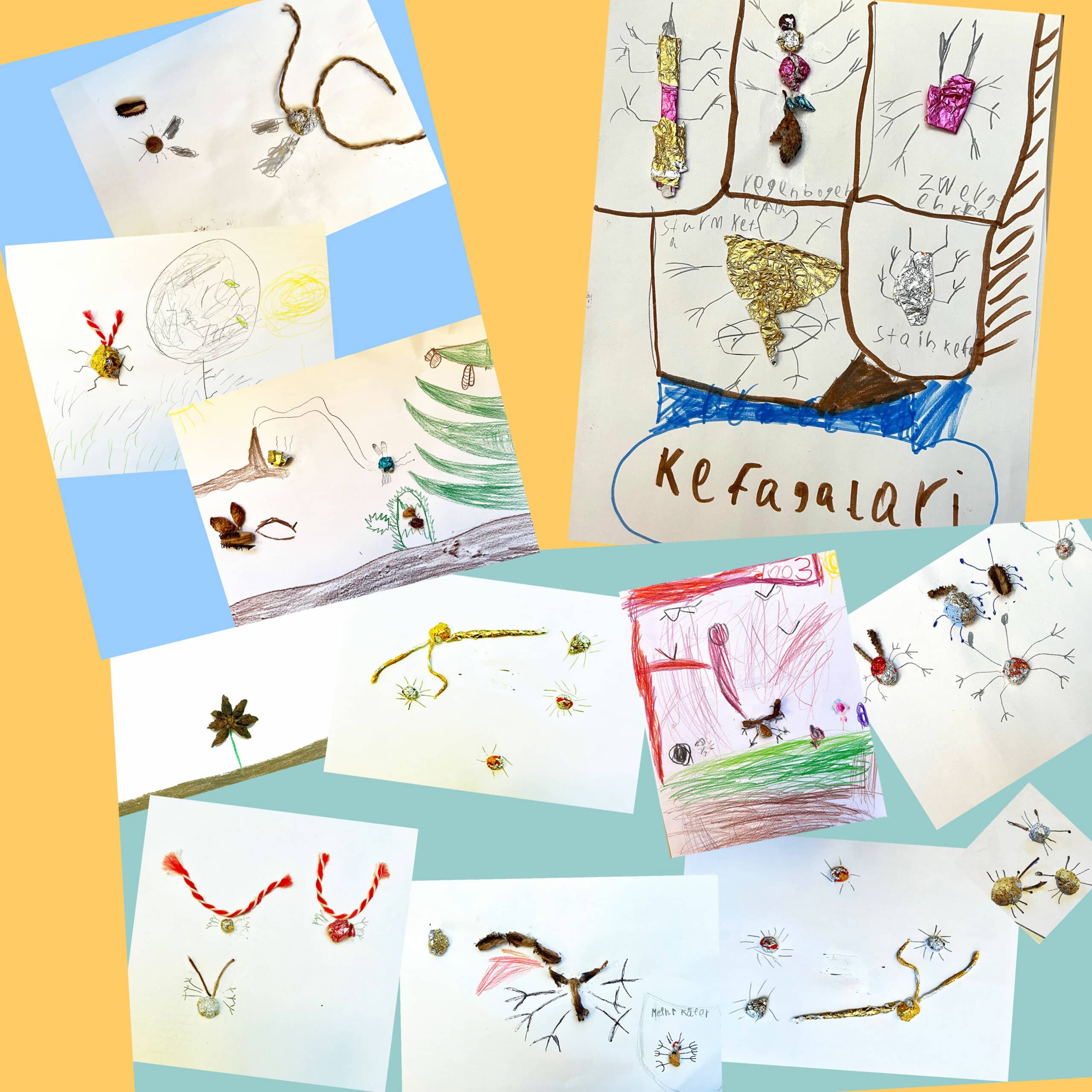
The Beetle Gallery
Great art by small artists
As an artist, I am free to choose my materials and my goals. Freedom in art is great! But it’s also a big task. First of all, there is a lot to try out. I can create my very own artistic path, but I also have to decide and implement a lot on my own – sometimes without any instructions.
I had the great pleasure of designing a colorful double lesson with the enthusiastic children of a 2nd grade elementary school class. At the beginning, we talked about the profession of an artist.
In contrast to craftsmanship, pretty much anything can be tried out in art. I don’t have to follow any work plans in order to achieve a functioning result, such as a car or a usable device.
The fact that you can use pretty much any material and try out all kinds of things has been enthusiastically received by the children!
“Yes, but how do I do that with metal? I need scissors for that?” My enthusiasm grew when I was able to assure them that there are also suitable tools for metal. In art, you can decide for yourself which material you like best. Wow!
A miniature is so mini mini small!
The children already knew from their teacher’s announcement that I prefer to work with small found objects myself. However, working as small and detailed as in my miniatures is a huge challenge for the second graders.
However, all the children accepted my invitation to make little beetles out of found objects with me without hesitation and with great enthusiasm.
The Beetle Gallery
First of all, we looked together at what a beetle actually looks like. How many legs do they have? Why are some brightly colored and some grey or brown? How big are they? Where do they live?
Wonderful creations of all kinds were then made from tin foil, plant remnants and small pieces of parcel string. Even imaginative names were quickly found: There are rainbow beetles, stone beetles, dwarf beetles and many other fantastic species in the newly created beetle gallery.
What is actually the opposite of a miniature?
Keeping to the small dimensions challenged the fine motor skills of the primary school children. A whole pine cone, for example, was very suitable for being completely processed in the work. Unfortunately, it didn’t really stick to the thin paper – although it looked really convincing as a landscape around the little beetle that had been created.
But we had discussed beforehand that everything is allowed in art.
“Then that’s a big one!”
was announced without further ado. That’s how it should be! Everything is allowed in art! The children certainly put this into practice in an incredibly creative way. I am still full of enthusiasm and really impressed by so much commitment and joy! The double lesson flew by incredibly quickly and easily. All the children contributed their ideas and were highly motivated.
That was a great collaboration. Dear children of the second lion class at KGS Voiswinkel – you are great!
Try out what you really want to do! It is not only in art that you are allowed to go your own way.
Your Magdalena Hohlweg

